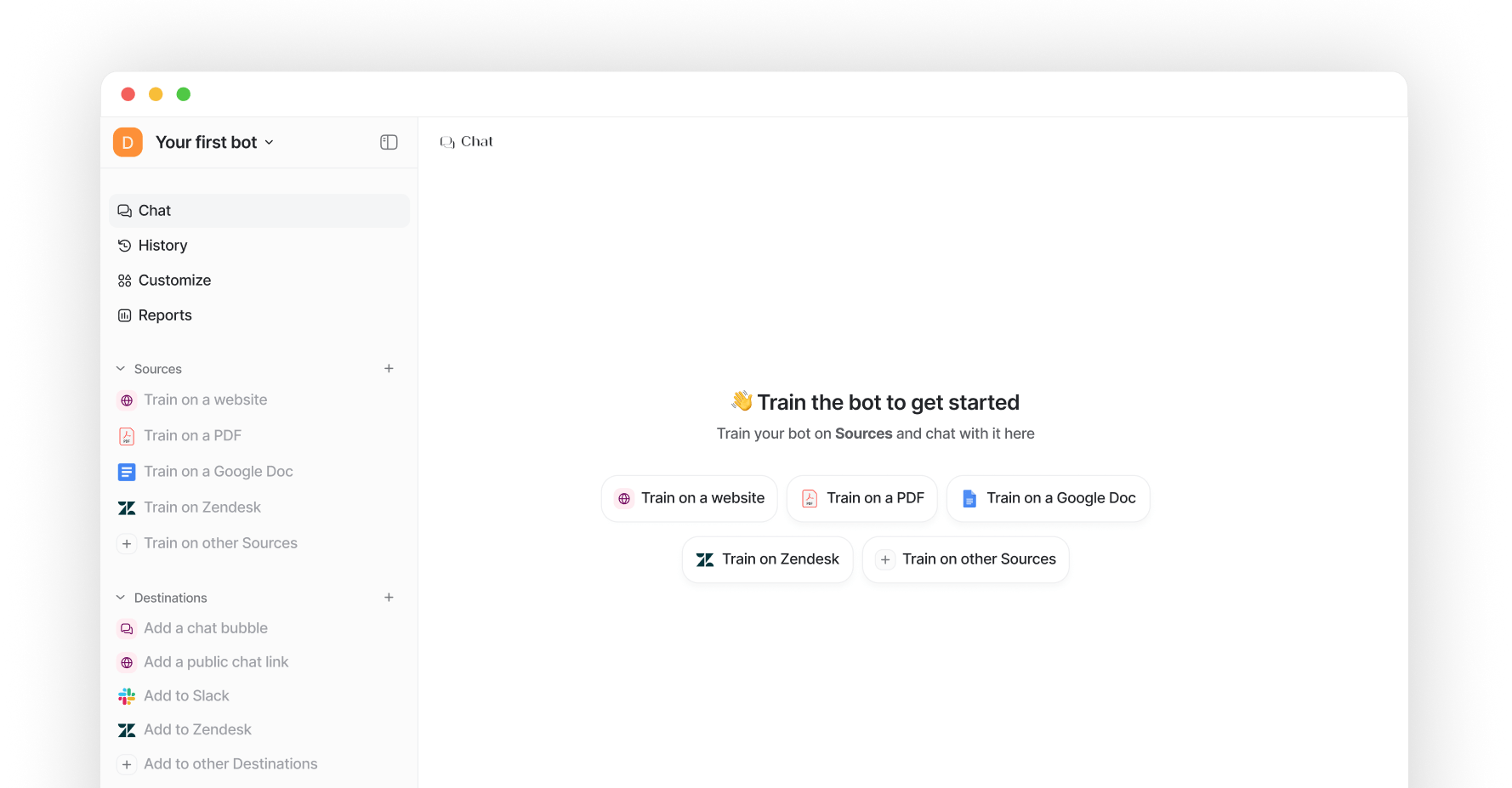Zendesk AI bots can be a powerful tool for automating customer support, but their true potential depends on proper optimization. This guide will walk you through the steps to enhance your Zendesk AI bot’s performance and deliver a superior customer experience.

1. Set clear objectives for your AI bot
Before you embark on this optimization journey, pause. What’s your endgame? Define it. Are you aiming to slash response times? Perhaps you’re trying to improve the workflow for your agents. Whatever your goals, make them crystal clear.
-
Reduce response times.
-
Increase first-contact resolution rates.
-
Improve customer satisfaction scores.
-
Decrease the volume of tickets handled by human agents.
2. Analyze your Zendesk AI bot’s current performance
How’s your bot performing right now? Dive into the metrics:
-
Resolution rate: Is it solving problems or creating them?
-
Customer satisfaction scores: Are your users grinning or grimacing?
-
Handoff rate to human agents: Is your bot a team player or a lone wolf?
-
Average handling time: Swift as an arrow or slow as molasses?
With eesel AI, you can check each individual bots performance in the ‘History’ and ‘Reports’ tab. From there, you can review how each response is handled and whether you need to make specific changes to your training or prompting. Learn more about your AI insights for Zendesk here.
3. Enhance your AI bot’s knowledge base
Your knowledge base is your bot’s brain. Treat it well. Keep it sharp. Here’s how:
-
Regularly update and expand your FAQ section. Fresh content is king.
-
Accuracy is non-negotiable. Double-check, triple-check, then check again.
-
Organization: If you can’t find it, neither can your bot.
-
Integration is power. At eesel AI, we’ve supercharged our bot by integrating platforms like Confluence and Google Drive.
With eesel AI, simply check out the ‘History’ tab for any bot and hover over any gaps in training to find out some more detailed information about what exactly is missing from the knowledge base you provided it.
4. Refine conversation flows
Conversation is an art. Your bot needs to master it. Here’s your game plan:
-
Identify the paths your users tread most often. Then, make them smoother than a freshly paved road.
-
Clarity is your bot’s best friend. Craft prompts and responses that anyone could understand.
-
Design conversation branches that make sense, not mazes that confuse.
You can hop over to the ‘Customize’ tab of the eesel AI dashboard to craft an overall prompt for each bot. You can also select specific destinations and add more customization, or contact us to personalize even further. Here’s some more specific instructions for customizing your Zendesk bot.
5. Implement Natural Language Processing (NLP)
NLP is your bot’s superpower, make sure you leverage it:
-
Train it in the art of industry-speak. Your bot should be fluent in your business lingo.
-
Humans make mistakes. They misspell. They use slang. Teach your bot to roll with the punches.
-
Language evolves. So should your bot. Keep its language model fresh and up-to-date.
eesel AI uses OpenAI for its AI processing, so you can be sure it’s always top-notch.
6. Personalize your AI Bot’s interactions
Tailor your Zendesk AI bot’s responses with some personal touches:
-
Use customer data to greet users by name. It’s the digital equivalent of a warm handshake.
-
History matters. Let past interactions shape future responses.
-
Context is king. Tailor content based on where your user is in their journey.
At eesel AI, we’ve taken this to heart. Our bot doesn’t just respond; it recommends. It guides. It knows what each user needs before they even ask.
7. Set up proper escalation paths for your AI Bot
Sometimes, human touch is necessary. Make the handoff smooth:
-
Define clear triggers. When should your bot wave the white flag?
-
Context: don’t make your human agents start from scratch.
-
Automation is your friend. Let complex issues automatically become tickets.
8. Continuously train and improve your AI Bot
Your bot is not a “set it and forget it” tool. It’s a living, learning entity:
-
Regularly review its conversations to discover what’s working and what isn’t.
-
Identify its weak spots. Then, make them strong.
-
Feed it fresh data. The more it learns, the smarter it gets.
9. Leverage advanced features
Your bot has hidden talents. It’s time to uncover them:
-
Embrace multi-language support.
-
Emotions matter. Use sentiment analysis to read between the lines.
-
Be proactive. Explore predictive capabilities to solve problems before they start.
10. Monitor and adjust your AI Bot
Keep your finger on the pulse:
-
Regular check-ups are crucial to see how your bot is performing.
-
A/B testing is your secret weapon. Try different approaches. See what sticks.
-
Be flexible. As your bot evolves, so should your strategy.
11. Gather and act on feedback
Feedback is gold, so make sure you mine it:
-
Post-interaction surveys are your window into the user’s mind.
-
Your support team is on the front lines, so listen to their insights.
-
Don’t just collect feedback. Act on it and let it shape your bot’s future.
By following these steps, you can significantly enhance your Zendesk AI bot’s performance, leading to improved customer satisfaction, increased efficiency, and better support outcomes. At eesel, we have seen substantial improvements in our customers’ support metrics and hope that we can help others achieve the same.
Remember, in the world of AI bots, standing still is moving backward. Optimization is an ongoing process – regularly revisit these steps to ensure your Zendesk AI bot continues to meet and exceed expectations.
More information and resources about AI in customer support:
How AI is transitioning customer support roles to success, community, and education




